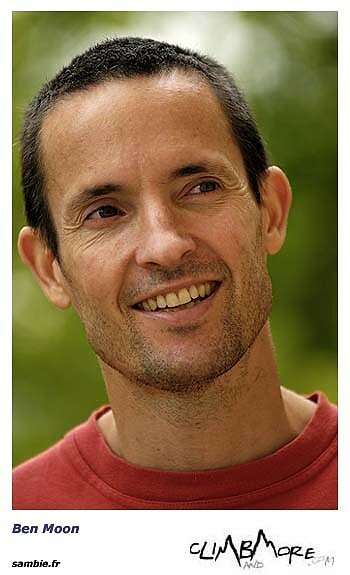Listen to the Master: Ben Moon, Part 2

WHAT YOU WANT TO DO
It’s difficult to give hard-and-fast rules because you can’t train for everything. First of all, you need a good idea of what you want to do.
A LITTLE AND OFTEN
A little and often will take you a lot further than loads but rarely! In those periods when you don’t feel so motivated try to do something. Keep ticking over.
BE PATIENT, LET IT HAPPEN
Don’t expect too much. Setting unrealistic goals will kill your motivation and motivation is everything. If your best on-sight is 7b that doesn’t mean your on-sight level is 7b. When everything has gone well, you’re nearing the end of a summer climbing maybe, but your base level will probably be closer 6c+/7a. Be realistic with your goals. You have to work through each level to get where you want to be. Be patient, let it happen.
AT THE START
At the start of any training regime it’s important to get into shape by doing low-intensity, high-volume workouts.
THE BASIC PLAN OF TRAINING POWER
The basic plan is to train power in four- or five-week blocks, and break them up with two weeks of endurance or power-endurance. These breaks give your body rest and help you break out of ruts. Last year, during a two-week period, I did 30-move power-endurance circuits and came back to my power problems way stronger.
START OF TYPICAL POWER SESSION
I’ll start typical power session by stretching for 15 minutes and warming up for 20 minutes. Then I’ll spend 20 minutes doing ladders on a campus board. Then I’ll boulder. Goals are important, so I have certain problems – inside and out on different surfaces and angles – that I know are really hard. At the start of a training period I might not be able to do any of them, but my goal is to do them all. I don’t get obsessed though; I might just try the individual moves on one problem, or a link, three or four times before moving on. I don’t think trashing yourself works, so I stop bouldering when I feel I’ve still got something left.
WEIGHTS BEFORE A REST
On the day before a rest day I’ll finish off with weights: two sets of power pulls, bench press, military press, upright rows, and biceps and triceps curls. [At the very start] I can do up to 12 reps (that’s quite high) but after six or seven sessions I move to higher weights and lower reps. You’ve got to be careful not to do too much. It takes quite a while for your body to get used to it. In an ideal world I’d like to do weights twice a week.
TRAINING DIARY
I record everything in a training diary – you get stronger very gradually so it’s useful to look back and see what you were doing in terms of quality and quantity in a set amount of time.
IT’S NO GOOD IF YOU’RE NOT HAPPY
Training takes mental effort. It’s no good if you’re not happy, so I don’t diet, although I do try to eat healthy food.
DIETARY SUPPLEMENTS
I’ve tried amino acids and a few other things, but I think it’s really hard to tell if they’re any good.
RUNNING
I think if you run hard on rest days, then it’s definitely going to be bad, but if you can hold back a bit and do just 30 or 40 minutes of medium-pace running, it’s going to help your general fitness in terms of recovery [capabilities] and aerobic fitness. In general I can say I don’t know if running improves my climbing but it makes me feel happy.
JUST CLIMB, CLIMB, CLIMB …
I think that young people worry too much about training and don’t climb enough. Now, I spend all my time training, but in the early days I’d climb, climb, climb. Technique is the key; all good climbers have it, and you’re not going to get it on a campus board, or doing footless problems, or even climbing on plastic. The time to start training is when you stop improving.
WANT SOMETHING BADLY ENOUGH
If you want something badly enough and you work at it, you’ll probably get it, and that comes from the love of climbing.
Lisa Morgan, Full Moon, “Climbing” 1994, No. 147
Marius Morstad, Training with Ben & Jerry, “On The Edge” 1999, No. 92
Dave Pegg, Shooting the Moon, “Climbing” 1996, No. 164
Photos: Samuel Bié
|